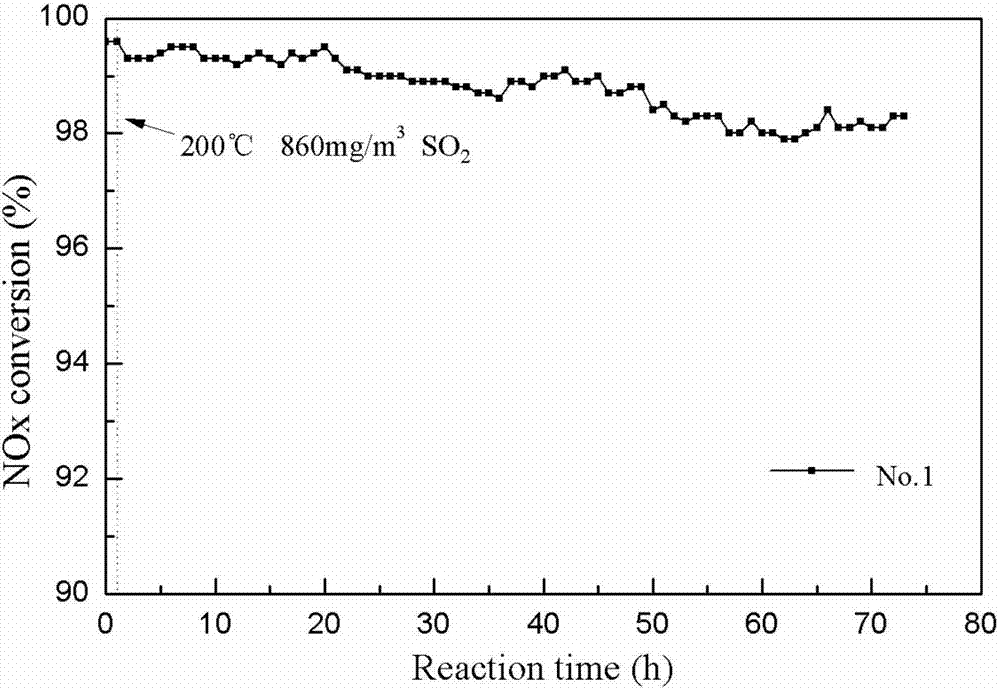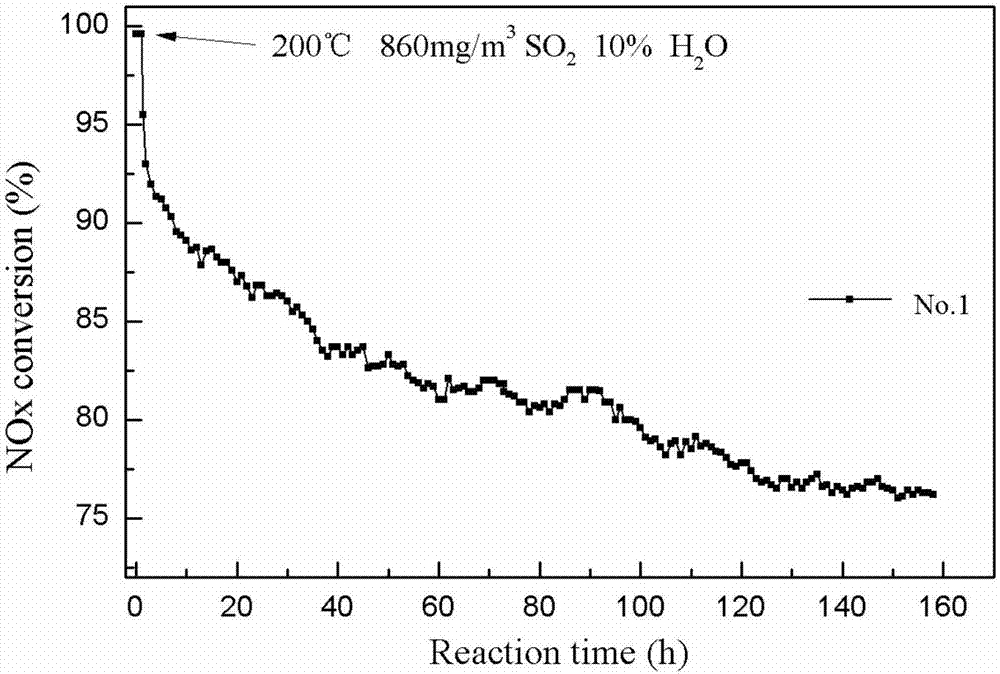Preparation method of low-temperature sulfur-resistant and water-resistant denitration catalyst
A denitrification catalyst and catalyst technology, applied in chemical instruments and methods, heterogeneous catalyst chemical elements, physical/chemical process catalysts, etc., can solve the problems of low-temperature industrial boiler flue gas treatment, complex equipment, poor low-temperature activity, etc. problems, to achieve the effect of abundant raw materials, low cost, and lower activation temperature
- Summary
- Abstract
- Description
- Claims
- Application Information
AI Technical Summary
Problems solved by technology
Method used
Image
Examples
example 1
[0023] Dissolve 2g of oxalic acid, 1g of ammonium metavanadate and 3g of antimony trichloride in 40g of deionized water, and dissolve them all at 40°C; finally, 20g of TiO 2 Slowly add the carrier to the above solution, and make it viscous at 40°C; put the obtained viscous solid in an oven for drying, then put it in a muffle furnace, and make it viscous at 250°C Calcined for 2 hours, then calcined at 450°C for 5 hours, cooled naturally to room temperature, sieved to 20-120 mesh for later use, and obtained 1# catalyst.
example 2
[0025] Dissolve 6g of oxalic acid, 2g of ammonium metavanadate and 6g of antimony trichloride in 80g of deionized water, and dissolve them all at 40°C; finally, 40g of TiO 2 Slowly add the carrier to the above solution, and make it viscous at 40°C; put the obtained viscous solid in an oven for drying, then put it in a muffle furnace, and make it viscous at 250°C Calcined for 2 hours, then calcined at 450°C for 5 hours, cooled naturally to room temperature, sieved to 20-120 mesh for later use, and obtained 2# catalyst.
PUM
 Login to View More
Login to View More Abstract
Description
Claims
Application Information
 Login to View More
Login to View More - R&D
- Intellectual Property
- Life Sciences
- Materials
- Tech Scout
- Unparalleled Data Quality
- Higher Quality Content
- 60% Fewer Hallucinations
Browse by: Latest US Patents, China's latest patents, Technical Efficacy Thesaurus, Application Domain, Technology Topic, Popular Technical Reports.
© 2025 PatSnap. All rights reserved.Legal|Privacy policy|Modern Slavery Act Transparency Statement|Sitemap|About US| Contact US: help@patsnap.com



